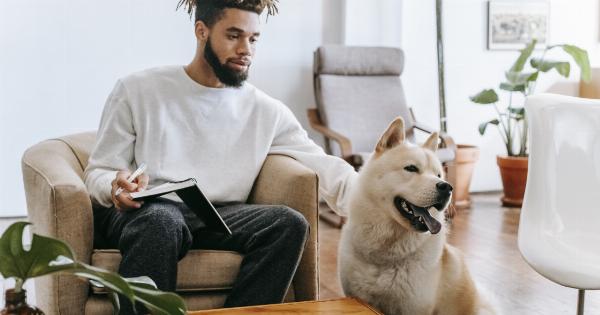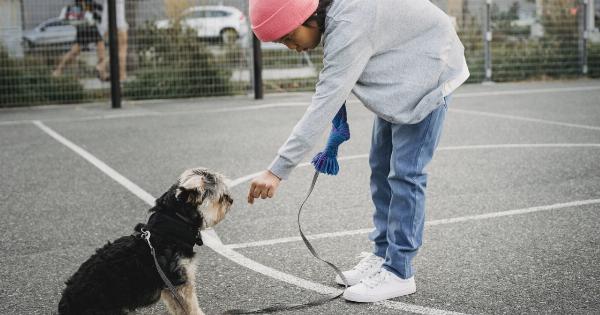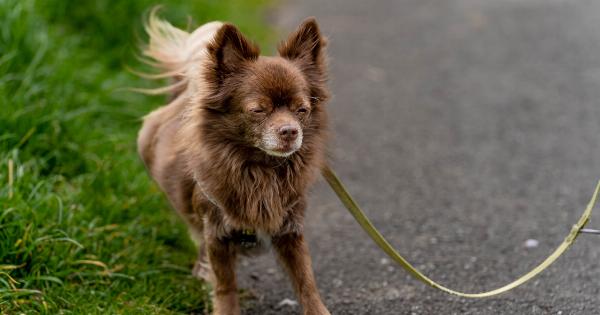Petting a dog can be a delightful experience for both the pet and the person doing the petting. Interacting with dogs has been proven to have numerous health benefits, such as reducing stress, lowering blood pressure, and improving overall mood.
However, it is crucial to understand the importance of asking for permission before reaching out to pet a dog, whether it is a familiar pet or a stranger’s dog. In this article, we will explore the reasons why asking before petting a dog is so important and provide tips on how to approach dogs in a respectful and safe manner.
1. Respect the Dog’s Boundaries
Just like humans, dogs have their own personal boundaries. Not all dogs welcome interaction from strangers, and some may even feel threatened or frightened when approached without warning.
By asking for permission before petting a dog, you demonstrate respect for their personal space and boundaries.
2. Avoid Potential Behavioral Issues
Petting a dog without permission can potentially trigger negative behavioral responses. Dogs may react aggressively or anxiously if they feel their space or personal boundaries are being violated.
By asking for permission, you give the dog’s owner the opportunity to assess their dog’s behavior and provide guidance on whether it is safe to approach or pet them.
3. Safety for Both Humans and Dogs
Asking for permission before petting a dog ensures the safety of both the person and the animal. Some dogs may have certain triggers or sensitivities, such as past trauma or fear of unfamiliar people.
By asking for permission, you allow the owner to assess the situation and ensure that it is safe for everyone involved.
4. Preventing Allergic Reactions
Some individuals may have allergies to dogs or specific breeds. By asking before petting, you give the person an opportunity to inform you about any potential allergies they may have.
It is always considerate to ask and avoid petting a dog if it could cause an allergic reaction in the person.
5. Protecting Service Dogs
Service dogs play a vital role in assisting individuals with disabilities in their daily activities. When you encounter a service dog, it is crucial not to distract them from their duties.
By asking before petting, you give the owner the chance to let you know if the dog is working and should not be disturbed.
6. Teaching Children Consent and Respect
Teaching children to ask for permission before petting a dog is an essential lesson in respect and consent.
By setting this example, we can raise a generation of responsible and respectful individuals who understand the importance of respecting boundaries, both with animals and humans.
7. Anxiety and Fear in Dogs
Dogs can experience anxiety and fear in various situations, especially when approached by strangers.
By asking for permission, you allow the owner to inform you if the dog is anxious or fearful, which helps prevent potentially distressing situations for the dog.
8. Promoting Responsible Dog Ownership
Responsible dog owners prioritize the well-being and safety of their pets. By asking for permission, you contribute to a culture of responsible dog ownership by respecting the rules and preferences set by the owner.
It also encourages dog owners to socialize and bring their pets to public spaces, knowing that their dog’s boundaries will be respected.
9. Understanding Dog Behavior
Not all dogs react the same way to petting or physical contact. By asking for permission, you create an opportunity for the owner to share valuable information about their dog’s behavior, preferences, and any specific cues to watch out for.
This understanding is crucial in ensuring a positive and safe interaction with the dog.
10. Building Trust and Positive Experiences
Asking for permission before petting a dog helps build trust and positive experiences between humans and dogs.
By respecting the dog’s boundaries and seeking permission, you allow the dog to learn that interactions with people can be safe and positive, promoting a harmonious relationship between humans and dogs in general.































